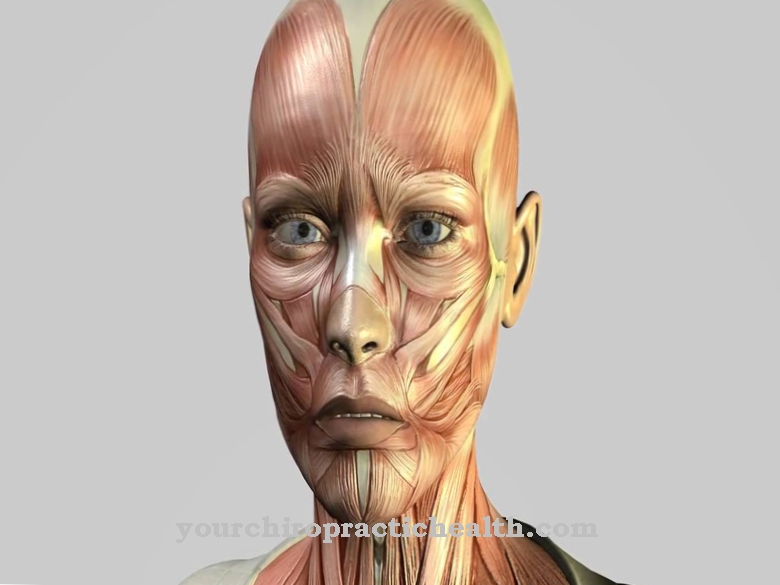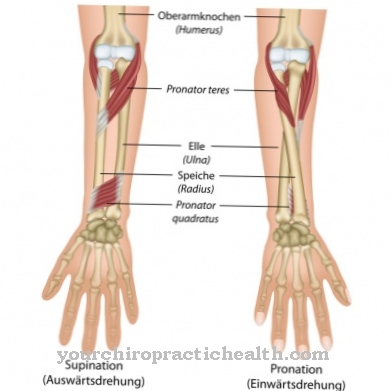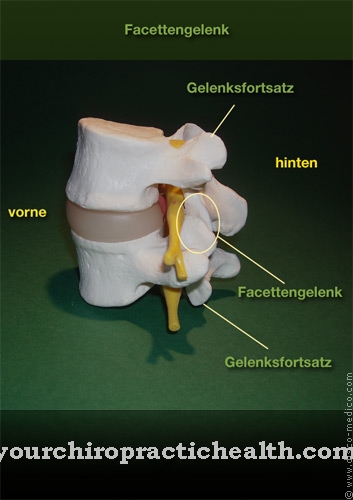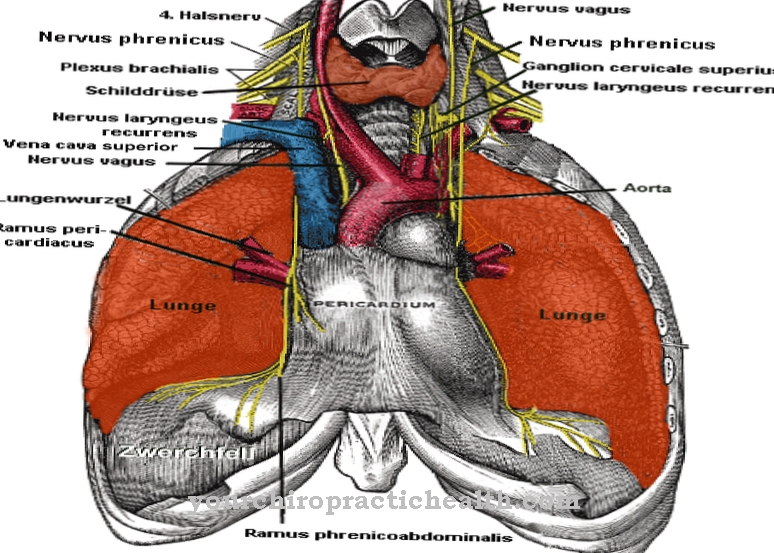The Finger bones belong to the bony structures of the upper extremities of the human musculoskeletal system. With the exception of the thumb, all fingers consist of three individual bones (phalanges) that are connected by joints.
What is a finger bone?
The hand is the functionally highly complex human gripping device. It is roughly made up of the wrist, metacarpal and fingers. The bony structures, i.e. the eight carpal bones, five metacarpal bones and 14 finger bones, form the basic structure of the hand.
From an anatomical point of view, the fingers connect distally to the metacarpal bones and practically mark the five end links of the hand. The finger bones of the five fingers, i.e. the thumb, index finger, middle finger, ring finger and little finger, each consist of several individual bone members, the so-called phalanges. The cohesion and mobility of bones are based on the articulation of these individual finger joints, including the necessary muscles, tendons and ligaments.
Anatomy & structure
The fingers of the thumb are made up of two, otherwise with all other fingers of three. Starting from the metacarpus distally, they are conceptually divided into the basic, middle and terminal phalanx or first (proximal), second (medial) and third (distal) phalanx.
The designation is based on their proximity or distance to the body trunk. Structurally speaking, the phalanges, i.e. the bony phalanges, belong to the elongated tubular bones, which consist of two joint ends covered with cartilage and an intermediate shaft. Accordingly, they consist of a proximal base, a body and a distal head. The first phalanx, the proximal phalanx, is generally the longest of the finger bones, although the length varies with the different fingers. The middle phalanx should also be positioned between the distal and proximal phalanx in terms of length. The third link is the shortest compared to the other links.
The individual phalanxes are connected by small joints. The metacarpophalangeal joints, which are colloquially known as the knuckles, lie between the metacarpal bones and the associated basic phalanx. The two rows of joints that are located between the base and middle phalanx and the middle and terminal phalanx are called the middle and end joints of the fingers. They are also known as the proximal and distal interphalangeal joints.
Function & tasks
There are three joints on the index, middle and ring fingers as well as on the little finger: the base joint and the two interphalangeal joints. The metacarpophalangeal joints of fingers 2 to 5 are functionally assigned to the so-called egg joints, which allow two directions of movement: movements to the right and left side, i.e. downward and adduction, as well as forward and backward movements, i.e. flexion and extension.
The interphalangeal joints are hinge joints and therefore have a degree of freedom with bending (flexion) and stretching (extension). Compared to the other fingers, there are only two joints on the thumb. The basic joint corresponds anatomically and functionally to a saddle joint. As in the case of the egg joint, movements in two directions, i.e. Abduction and adduction as well as flexion and extension can be carried out. The main task of the saddle joint is the opposition function, i.e. the juxtaposition of the thumb to the other fingers. The diverse, precise movement abilities of the hand are based on the articulated, freely movable fingers.
The targeted interaction between the thumb and the other fingers forms the basis for the various precision and power grips and thus for fine motor skills, i.e. for complex motion sequences. The fine motor mobility of the fingers is essential for functions such as gripping, touching, supporting or holding and enables them to handle objects in a controlled and coordinated manner and to move them. In addition, the fingers have a communicative importance, as they are the prerequisite for gestures, writing or even sign languages.
Diseases
Missing fingers or fingers that can only be used to a limited extent in terms of function can severely hinder everyday ability to act. The cause of the functional restrictions or limited mobility can be different clinical pictures, such as rheumatism, gout and osteoarthritis, but also fractures, tumors or genetically caused malformations.
Polyarthrosis refers to degenerative wear and tear on several joints at the same time, in particular on the end and middle joints of the fingers and the saddle joint of the thumb. The symptoms are mostly due to premature wear and tear or progressive destruction of the protective joint cartilage. A distinction is made between Heberden's arthrosis, if the end joints of the fingers are affected, and Bouchard's arthrosis, if the median joints of the fingers are affected. Osteoarthritis of the thumb saddle joint is known as rhizarthrosis. Joint stiffness, joint swelling or palpable bulges as well as load-dependent pain and later also pain at rest are symptomatic.
As the disease progresses, there are usually additional incorrect postures that are associated with a change in the joint structure. The joints are increasingly restricted in their mobility and can even stiffen in pathological positions. Similar symptoms can be seen in inflammatory systemic diseases such as rheumatoid arthritis, which also attacks and destroys the joints. The course is mostly chronically progressive, but sometimes also with relapses and a very individual clinical picture. Congenital malformations include, on the one hand, adactyly, in which all fingers are usually missing on one side, and, on the other hand, polydactyly with an excessive number of fingers.
In the case of clinodactyly, the phalanxes are bent to the side, caused by an isolated malformation or as a concomitant symptom of genetic diseases. A fracture of the fingers can affect the base, middle, or terminal phalanx. The cause of the break is usually trauma, i.e. direct external force on the bone.
























.jpg)



